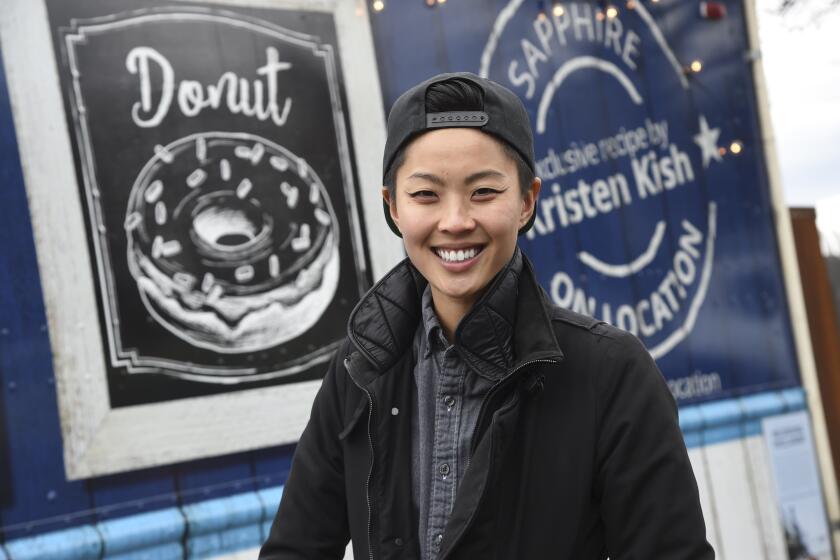How WWII Affected America’s Minorities
- Share via
The timing is right for a history like this. The World War II generation is dying out, and America has reacted with a wave of patriotic nostalgia. Books such as Tom Brokaw’s “The Greatest Generation” and movies such as “Saving Private Ryan” are celebrating the “good war” against the Axis and the virtues that won it as they haven’t been celebrated in decades. This is natural, even laudable, but it runs the risk of re-sanctifying and re-whitewashing what, as UC Berkeley ethnic studies professor Ronald Takaki reminds us, was a very complex experience.
Takaki’s survey of the war’s impact on Americans of African, Japanese, Mexican, Chinese, Jewish, Korean, Indian, German, Italian and Native origin reaches two conclusions. The first is that the battle against Nazi racism exposed America’s own prejudices as peacetime never could. The ironies were glaring: Why should minorities fight a “white man’s war” in segregated armed forces on behalf of a country that denied them equal rights and, in some cases, citizenship? That they fought anyway--with conspicuous gallantry--put the country in their moral debt.
The second is that World War II gave many minority Americans--and women of all races--an economic and psychological boost. The needs of defense industries, and President Franklin D. Roosevelt’s desire to counter Axis propaganda, opened skilled, high-paying jobs to people who had never had a chance at them before. Minority workers and soldiers made unprecedented contact with other minorities as well as with whites. Feelings of self-confidence and belonging, once enjoyed, were not easily relinquished. In short, Takaki says, the war jump-started the civil rights movement.
Takaki takes his title from a letter to the Pittsburgh Courier written in 1942 by James G. Thompson, an African American cafeteria worker who later served in the Army. Referring to the popular “V for victory” sign, Thompson said: “Let we colored Americans adopt the double VV for a double victory. The first V for victory over our enemies from without, the second V for victory over our enemies from within--those who perpetrate these ugly prejudices.”
“Double Victory” reconsiders some of the war’s most troubling questions. Why did the United States intern 120,000 Japanese Americans when there was no evidence of their disloyalty, yet largely leave German and Italian Americans alone? Why were immigration quotas on Jews from Europe upheld and shiploads of refugees from the Nazis turned away? Why didn’t the Allies bomb the rail lines to Auschwitz and otherwise disrupt the death-camp system once its existence was confirmed? Where logic fails, Takaki argues, the only explanation is racism.
Still, the picture Takaki gives us isn’t uniformly bleak. Nothing about the war was simple, he asserts. Korean Americans reacted to news of Pearl Harbor with joy--war with Japan meant eventual independence for their homeland--even though bigots often mistook them for Japanese. Long-oppressed Chinese Californians suddenly became “friends” because China was fighting Japan. Mexican Americans suffered the “Zoot Suit Riots” in Los Angeles in 1943, but gained respect because of their high casualty rate in the war.
Indeed, “Double Victory” would make a good high school textbook. It’s brief and clear. It tells familiar stories--the Navajo code talkers, the Japanese American 442nd Regimental Combat Team--in less detail than specialists would want, but it puts all the stories into one set of covers and in a revealing context. Some of Takaki’s conclusions will be disputed--particularly his assertion that the atomic bombing of Hiroshima was unnecessary--but his portraits of Roosevelt, having to be prodded into doing the right but politically risky thing and then doing it halfheartedly, and of President Harry S. Truman, his “buck-stops-here” facade hiding his genuine horror over the A-bombing, are convincingly nuanced.
More to Read
Sign up for our Book Club newsletter
Get the latest news, events and more from the Los Angeles Times Book Club, and help us get L.A. reading and talking.
You may occasionally receive promotional content from the Los Angeles Times.










